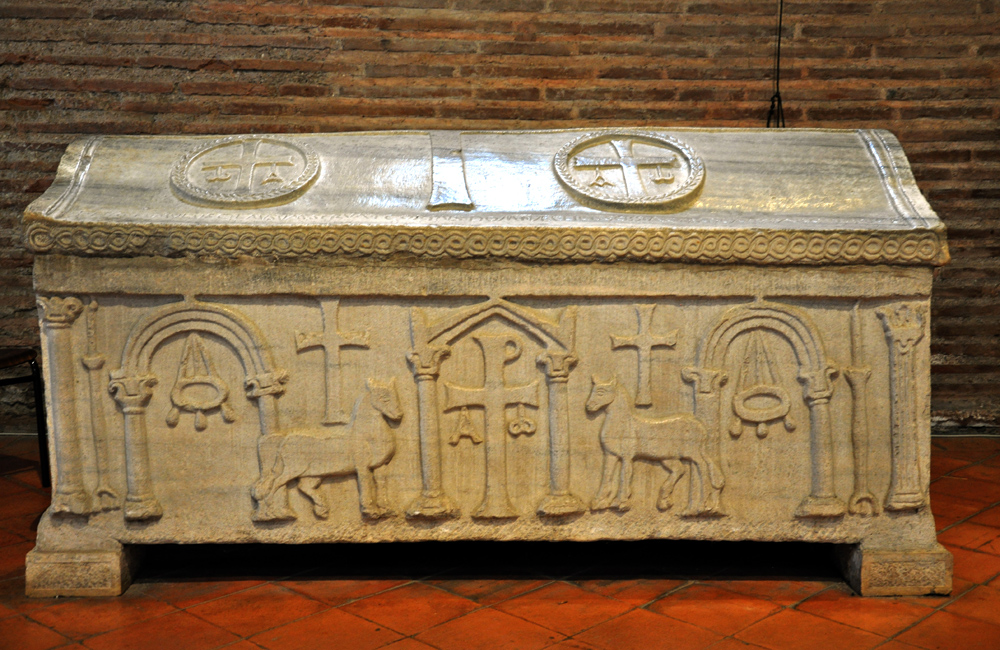The Sarcophagus of St. Felix

8th century
Marble
Basilica of Sant'Apollinare in Classe, Ravenna, Italy
On the frontal two sheep representing the Christian faithful approach the center from stylized temples with round arches and what appear to be chandeliers. In the center is a stylized temple with a pediment and
acroteria.
An acroterion is an architectural ornament placed on a flat pedestal called the acroter or plinth, and mounted at the apex or corner of the pediment of a building in the classical style.
It frames a modified staurogram representing Christ. From the crossbeam hang the alpha and omega, the "beginning and the end" in Revelation 1:8, 21:6, and 22:13. On the lid two wreaths enclose crosses of similar design.
The inscription along the front margin of the lid identifies the decedent:

hic tumulus clausum servat corpus domini [?]elicis sanctissimi ac ter beatissimi archiepiscopi
This sepulture encloses the body of the most holy and thrice-blessed Lord Archbishop Felix.
The letter at the head of the word elicis can only be a mangled F: The only archbishop of Ravenna with elicis in the Latin form of his name was St. Felix, who held the see from 709 to 725. The phrase ter beatissimus, "thrice blessed," is a common epithet for bishops.
View this image in full resolution.
Read more about the staurogram symbol and the sheep/lamb symbol.
Photographed at the basilica by Richard Stracke, shared under Attribution-NonCommercial-ShareAlike license.

